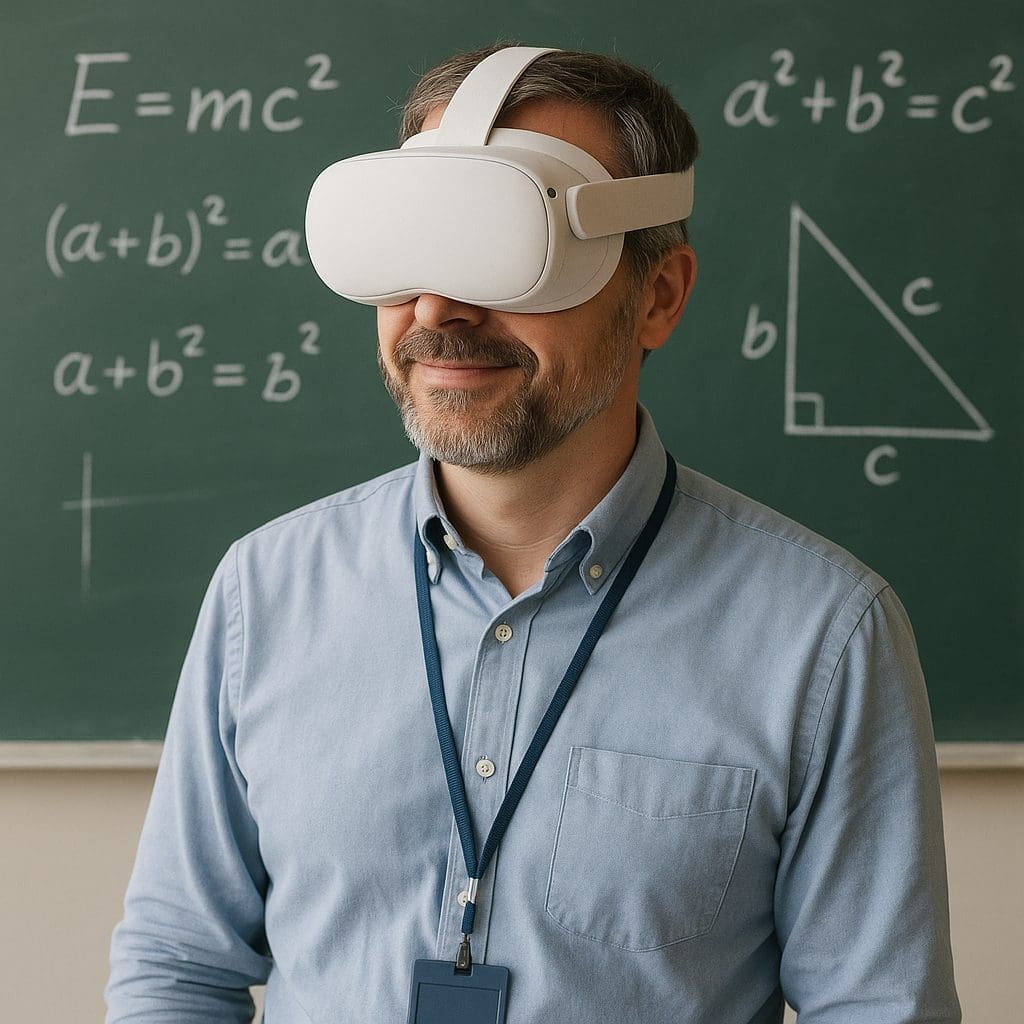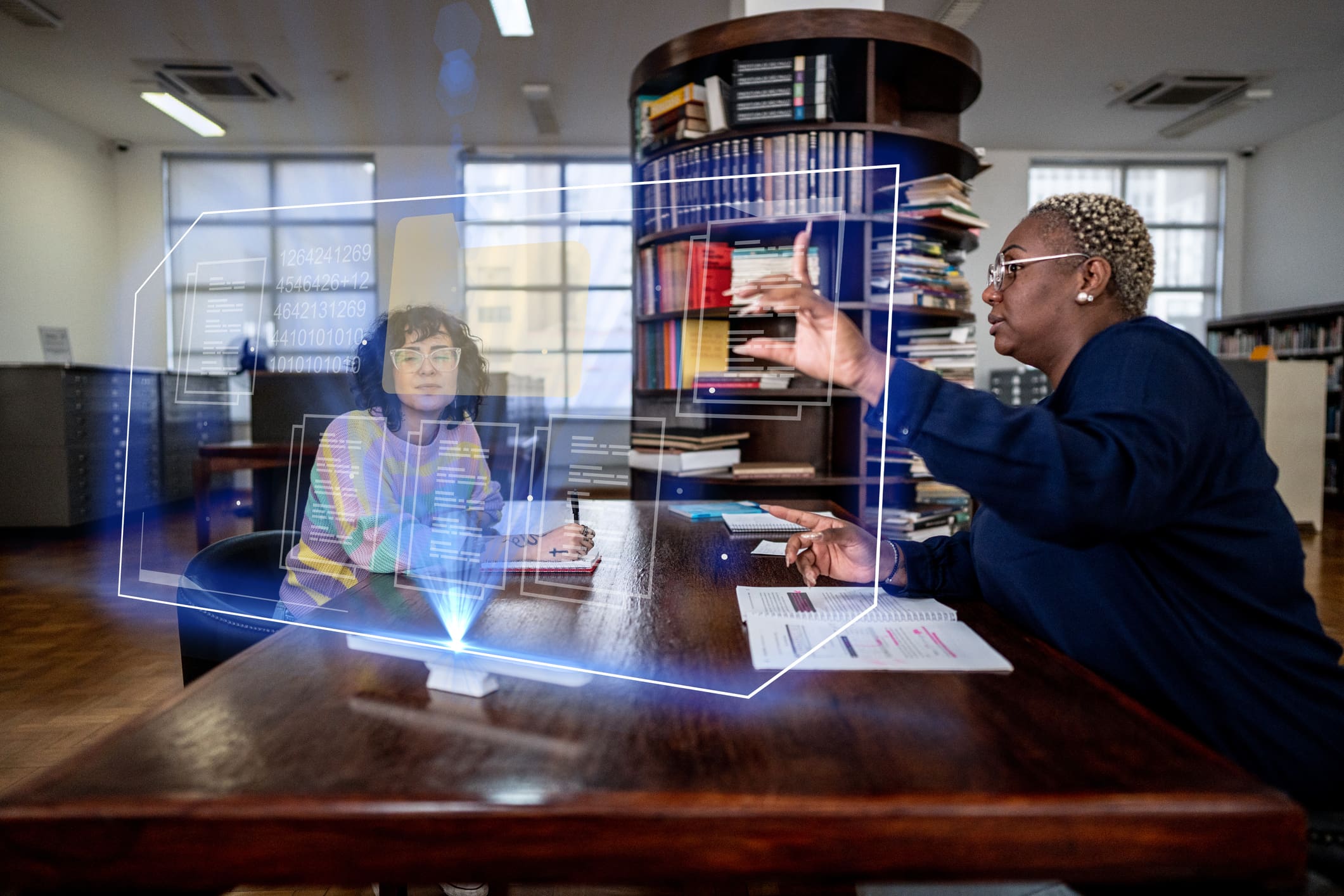
 The conversation around virtual reality (VR) in education has shifted dramatically in the past few years. What was once considered a flashy “nice-to-have” is now proving to be a powerful instructional tool with measurable returns. Schools and districts evaluating VR today aren’t just asking “Is this engaging?”—they’re asking “What is the return on investment?” The answer is clear: when properly implemented, VR pays for itself through improved student outcomes, operational savings, and enrollment gains. In fact, many schools are realizing that the cost of ignoring VR may be far greater than the investment required to implement it.
The conversation around virtual reality (VR) in education has shifted dramatically in the past few years. What was once considered a flashy “nice-to-have” is now proving to be a powerful instructional tool with measurable returns. Schools and districts evaluating VR today aren’t just asking “Is this engaging?”—they’re asking “What is the return on investment?” The answer is clear: when properly implemented, VR pays for itself through improved student outcomes, operational savings, and enrollment gains. In fact, many schools are realizing that the cost of ignoring VR may be far greater than the investment required to implement it.
Why VR’s ROI Conversation Has Changed
For years, districts viewed VR as “cool but costly.” That perception is changing as the technology has matured and its educational impact has become more evident.
-
Lower total cost of ownership: Headsets are now more affordable and durable, while device management tools have streamlined classroom use.
-
Curriculum alignment: Standards-aligned VR experiences now cover core subjects, career and technical education (CTE), and special populations.
-
Time efficiency: Virtual labs, field trips, and simulations make it easier to teach concepts that are otherwise too complex, dangerous, or resource-heavy.
In short, VR has moved from a novelty to a true instructional utility—a tool that can be budgeted, scheduled, and measured just like textbooks or digital platforms.
Rethinking ROI in Education
When schools calculate return on investment, they often focus on financial costs alone. But in education, ROI includes a wider set of benefits—academic, operational, and community impact.
-
Instructional impact: Better mastery, retention, and faster concept acquisition.
-
Operational savings: Fewer buses and consumables, reduced lab costs, and lower logistical overhead.
-
Revenue resilience: Stronger enrollment and retention due to unique learning opportunities.
-
Teacher efficiency: Reusable lessons, streamlined prep, and smoother classroom management.
By broadening the definition of ROI, schools begin to see how VR supports both learning outcomes and fiscal responsibility.
Building a Clear Cost Picture
Of course, no ROI conversation is complete without understanding costs. Schools should calculate total cost of ownership (TCO) across a 3–4 year horizon, breaking it down by student and by year. This includes hardware, content licensing, device management, professional learning, and support.
Optima Advantage: Optima partners with Meta to offer factory-cost headset pricing and bundled packages that include training, content, and device management. This simplifies procurement and lowers your TCO, ensuring schools get more value out of every dollar spent.
Measuring the Benefits
Once costs are understood, schools can turn to benefits—and this is where VR often exceeds expectations. Savings come from replacing traditional field trips and consumables, while gains come from increased enrollment, stronger retention, and measurable learning improvements.
For example:
-
Two replaced field trips per year can offset thousands in transportation and venue fees.
-
A modest boost in enrollment—just a handful of students—can cover the cost of an entire VR program.
-
Teachers save hours of prep time with reusable VR lessons, freeing them to focus on instruction and support.
The impact compounds as VR expands across subjects and grade levels, driving returns that can be both immediate and long-term.
A Sustainable Path Forward
 To fully realize ROI, schools should approach VR with a phased strategy:
To fully realize ROI, schools should approach VR with a phased strategy:
-
Pilot with purpose: Start small with targeted units where VR clearly solves a problem.
-
Measure impact: Track academic, operational, and engagement metrics.
-
Scale gradually: Expand into additional subjects and grade levels once benefits are clear.
-
Sustain adoption: Refresh content, rotate devices, and provide ongoing teacher support.
This roadmap ensures that VR investments aren’t just exciting at launch but deliver continuous value year after year.
Why Optima
At Optima, we’ve designed our solution with ROI at the core. Schools that partner with us benefit from:
-
End-to-end bundles that include hardware, content, device management, and training.
-
A robust VR library with 200+ locations, 5,000+ avatars, and 30+ animated lessons aligned to standards.
-
Guided implementation support to track measurable impact and showcase results to stakeholders.
The Bottom Line
Virtual reality is no longer a futuristic add-on. It is a practical, cost-effective instructional tool that delivers measurable returns. Schools that embrace VR are not only enhancing student engagement and outcomes but also optimizing budgets, streamlining operations, and strengthening enrollment.
The real question isn’t “Can we afford VR?”—it’s “Can we afford to ignore it?”
Want to explore the ROI of VR in education firsthand? Connect with us to schedule a demo and start building your district’s roadmap.





